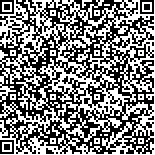|
| 引用本文: | 曾群,张海东,陈晓玲,田礼乔,李文凯,王国良.MERIS影像水环境遥感大气校正算法评价——以鄱阳湖叶绿素a浓度反演为例.湖泊科学,2016,28(6):1306-1315. DOI:10.18307/2016.0616 |
| ZENG Qun,ZHANG Haidong,CHEN Xiaoling,TIAN Liqiao,LI Wenkai,WANG Guoliang.Evaluation on the atmospheric correction methods for water color remote sensing by using MERIS image:A case study on chlorophyll-a concentration of Lake Poyang. J. Lake Sci.2016,28(6):1306-1315. DOI:10.18307/2016.0616 |
|
| |
|
|
| 本文已被:浏览 10054次 下载 6316次 |

码上扫一扫! |
|
|
| MERIS影像水环境遥感大气校正算法评价——以鄱阳湖叶绿素a浓度反演为例 |
|
曾群1,2, 张海东2, 陈晓玲3, 田礼乔3, 李文凯2, 王国良3
|
|
1.华中师范大学学报编辑部, 武汉 430079;2.华中师范大学城市与环境科学学院, 武汉 430079;3.武汉大学测绘遥感信息工程国家重点实验室, 武汉 430079
|
|
| 摘要: |
| MERIS是2002年发射的在轨运行近10年的ENVISAT-1卫星上搭载的主要传感器之一,在波段设置和辐射灵敏度等方面有非常突出的优势,能够较好地运用于Ⅱ类水体叶绿素a浓度反演,但Ⅱ类水体的大气校正仍然是亟待解决的一个关键问题.以我国第一大淡水湖——鄱阳湖为研究区域,采用FLAASH、6S、BEAM和QUAC共4种大气校正算法对2005和2011年具有同步实测光谱数据的鄱阳湖ENVISAT-1卫星MERIS影像进行大气校正处理,并对12种叶绿素a浓度反演模型的波段组合因子进行大气校正效果的对比分析.结果表明:(1)4种大气校正中,大气校正结果精度由高到低表现为FLAASH >6S >BEAM >QUAC,平均相对误差分别为31.13%、31.88%、69.48%和42.64%;决定系数(R2)分别为0.60、0.57、0.38和0.24;(2)在12种叶绿素a浓度反演模型的波段组合因子中,FLAASH得到的结果最优,其次是6S,BEAM和QUAC最差,在FLAASH算法中,由665、708和753 nm 3个波段遥感因子((Rrs(510)/[Rrs(443)/Rrs(560)])组成的模型精度最高,平均相对误差为25.12%,R2为0.74.建议采用FLAASH大气校正结果组成这个波段组合进行鄱阳湖叶绿素a浓度反演. |
| 关键词: 水色遥感 大气校正 叶绿素a MERIS FLAASH 6S BEAM QUAC 鄱阳湖 |
| DOI:10.18307/2016.0616 |
| 分类号: |
| 基金项目:国家自然科学基金项目(41571344,41331174)、中国水利水电科学研究院流域水循环模拟与调控国家重点实验室开放研究基金项目(IWHR-SKL-201514)和2015测绘地理信息公益性行业科研专项(201512026)联合资助. |
|
| Evaluation on the atmospheric correction methods for water color remote sensing by using MERIS image:A case study on chlorophyll-a concentration of Lake Poyang |
|
ZENG Qun1,2, ZHANG Haidong2, CHEN Xiaoling3, TIAN Liqiao3, LI Wenkai2, WANG Guoliang3
|
|
1.Editorial Department of Journal, Central China Normal University, Wuhan 430079, P. R. China;2.School of Urban and Environment Science, Central China Normal University, Wuhan 430079, P. R. China;3.State Key Laboratory of Information Engineering in Surveying, Mapping and Remote Sensing, Wuhan University, Wuhan 430079, P. R. China
|
| Abstract: |
| MERIS is the sensor of ENVISAT-1 satellite in orbit nearly 10 years, which was launched in 2002. The band setting and radiation sensitivity of MERIS could well be applied to chlorophyll-a concentration inference, but the atmospheric correction in Case Ⅱ water is still a key problem. Taking the Lake Poyang, the biggest freshwater lake in China as a case, the results of ENVISAT-1 satellite MERIS images using FLAASH, 6S, BEAM and QUAC atmospheric correction algorithms in 2005 and 2011 with simultaneous in-situ spectral data was evaluated. The band combination factor of 12 chlorophyll-a retrieval models were also assessed. Results show that:(1) the order of atmospheric correction accuracy from high to low are FLAASH, 6S, BEAM, QUAC, with the mean relative error of 31.13%, 31.88%, 69.48% and 42.64%, respectively; and the determination coefficients (R2) of 0.60, 0.57, 0.38 and 0.24, respectively. (2) Among the band-combined chlorophyll-a retrieval models, FLAASH is the best one, followed by 6S, BEAM and QUAC. As for FLAASH algorithm, the three bands ((Rrs(510)/[Rrs(443)/Rrs(560)]) model is the most accurate one, the MRE is 25.12%, the determination coefficient is 0.74. This band combination of FLAASH atmospheric correction results is recommended for the chlorophyll-a inference in the Lake Poyang. |
| Key words: Water color remote sensing atmospheric correction chlorophyll-a MERIS FLAASH 6S BEAM QUAC Lake Poyang |
|
|
|
|